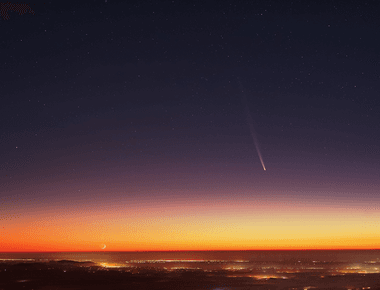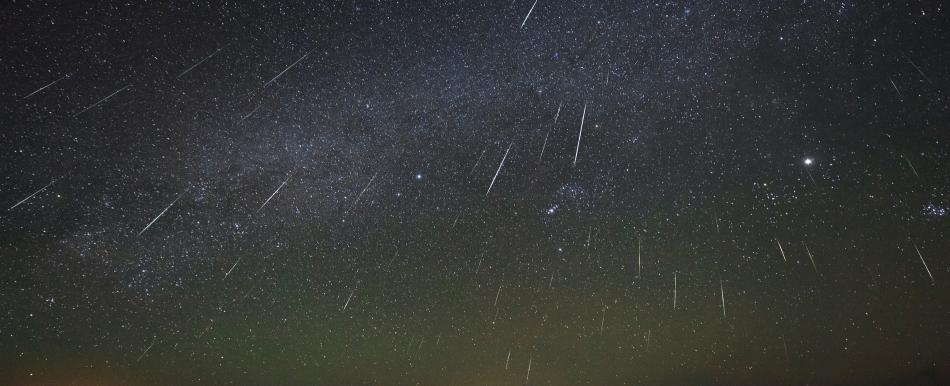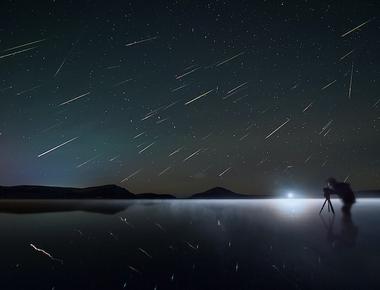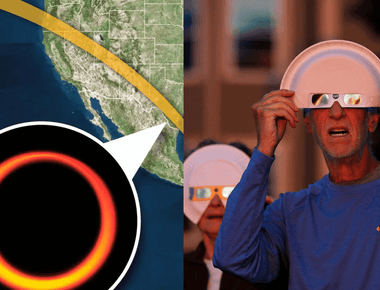
Geminids Meteor Shower: Tips and Tricks for Catching a Glimpse

Table Of Contents
The Geminids meteor shower is one of the most spectacular celestial events of the year. It is known for its high rate of meteors, which can reach up to 120 per hour at its peak. The meteors are also very bright and slow-moving, making them easy to see with the naked eye. Due to the favorable sky conditions of this year, Geminids will be a mesmerizing experience to amature astronomers. This guide will provide a comprehensive knowledge regarding the observational skills required to experience such celestial marvels.
History and Occurrence
Geminids occur when the earth crosses the trail of debris left in the path of 3200 Phaenthon. The radiant of this shower is located in the Gemini constellation thus giving its name. Geminids and Quadrantids are the only major meteor showers with a non comet parental body. 3200 Phaenthon is a part of the largest group of Near Earth Asteroids, the Apollo asteroids (Apollo asteroids are identified as a group of earth crossing asteroids with an Aphelion more than earth and a Perihelion less than earth.). The reason for the debris along the orbit of Phaenthon is unclear, because unlike comets, asteroids don’t leave a trail of debris along its path. Therefore scientists believe that Phaenthon has formed as a result of a comet breaking up, a few centuries ago.
Why Geminids called Geminids?
Meteor showers are named for the constellation that coincides with this region in the sky, a spot known as the radiant. The radiant point is the location in the sky from which the meteors appear to originate. Although the meteors are actually traveling to all directions, their paths appear to converge at the radiant point due to perspective.
The Geminid meteor shower is called Geminids because the meteors appear to radiate from the constellation Gemini. This is a common naming convention for meteor showers, where the shower is named after the constellation containing its radiant point.
In the case of the Geminids, the radiant point is located near the bright stars Castor and Pollux, which represent the heads of the twins in the constellation Gemini. This gives the meteors the appearance of originating from the twins themselves, hence the name “Geminids.”

When to watch
The Geminids meteor shower is active from December 4 to December 17, with its peak occurring on December 14, 2023. The best time to watch the shower is in the early morning hours, before dawn. This is because the radiant, the point in the sky from which the meteors appear to emanate, is highest in the sky at this time.
Where to watch
The Geminids meteor shower can be seen from anywhere in the world, but the best viewing conditions are in dark skies away from urban areas. If you live in a light-polluted area, you will need to travel to a darker location to see the shower.
What to Bring
Although you don’t need any special astronomical instruments to view a meteor shower there are few common necessaries that you should take with you. These things include
- A blanket or sleeping bag to stay warm.
- A chair or reclining lawn chair.
- Bug spray.
- A red flashlight to help you see without ruining the night vision.
- Snacks and Drinks to keep you refreshed.
- A star chart or app to help you identify the constellations.
How to watch
To watch the Geminids meteor shower, simply find a dark location and lie down on your back. Beware of the safety of the location of your choosing. Allow your eyes to adjust to the darkness for about 20 minutes. Once your eyes are adjusted, you should start to see meteors streaking across the sky. During this time avoid exposing your eyes to bright white light thus this can reduce your night vision. In case you need a light source, use the red flashlight.
Tips for watching
Here are a few tips for watching the Geminids meteor shower:
- Avoid looking directly at the radiant. The meteors will appear to radiate from this point, but you will see more meteors if you look away from the radiant.
- Be patient, it may take some time to see your first meteorite.
- Don’t stare at your phone or other electronic devices. This will ruin your night vision.
- Take breaks and get up and move around every 30 minutes to stay warm.
- If you feel lazy, listen to some music, or take a bunch of friends to chat with throughout the night.
Additional tips
- Check the weather forecast before you go. You don’t want to be stuck outside in the rain or snow.
- Let someone know where you are going and when you expect to come back.
- Be respectful to the environment. Leave no trace of your visit.
With a little luck and clear skies, you might just catch a glimpse of the dazzling Geminid meteor shower with your own eyes. Happy hunting!
Related Posts



